 |
Drawing
from Nature explores representations
of nature and culture with the juxtaposition of a pencil & camera - © Lloyd Godman
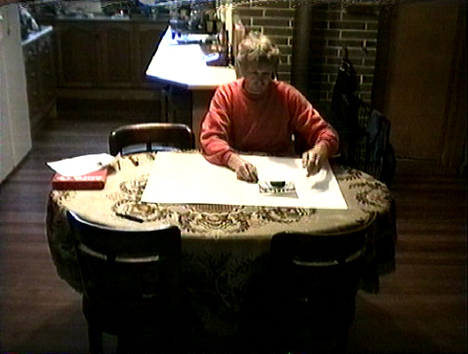 |
The
following series of images have been captured from a SVHS video tape
and along with the related text give some idea of the process and method
I use to make these combined drawings with photographs.
Generally
I work at night or if there is no surf to ride, early in the morning.
While I have a studio where I can lay out the work, the space is often
taken up with other projects, so for this reason I have tended to make
these drawings on the dinning room table. Also they take a long time
to make and I can work while having some social contact with my family.
Aspects of the drawing can be repetitive and tedious so at time I can
watch T. V and divert my attention to the drawing during the period of
the adverts. |
 |
Initially
I lay out the photograph in a position on the full size piece of paper
( around 800x500), that matches the location on a smaller rough sketch
I have previously made.
When
I print the photographs, I make two one which is used as a working image
to lay on the paper for the drawing and the other as a final image that
will be dry mounted to the paper once the drawing is completed. |
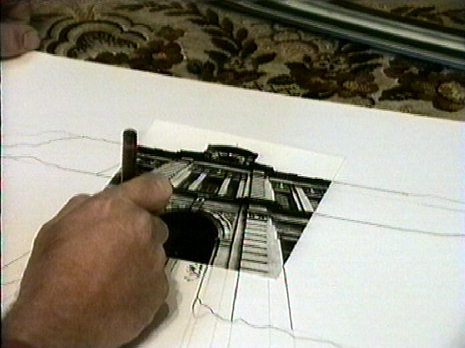 |
I
begin the drawing by marking out from key features of the photograph
or in the case illustrated here, dominant lines from the architecture
of the building. I imagine how they could extend out from the photograph
and metamorphosis, taking their own organic form as part of the
drawing. |
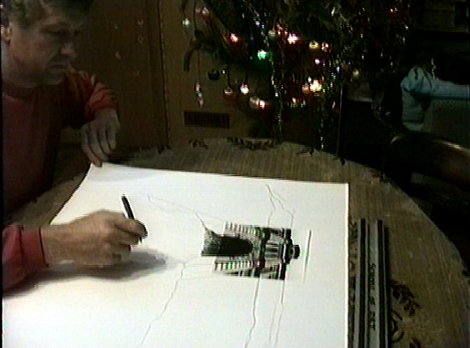 |
Gradually
the elements of the drawing begin to take shape on the page as a series
of key lines extend outwards from the photograph giving some idea of
how the drawing might evolve. Initially these are penciled in and once
the main structure of the image is formed, they are later transferred
to to pen and ink |
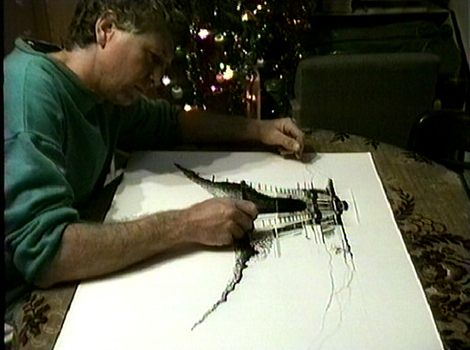 |
Once
these key lines have been established I begin to fill in the areas
with a series of overlapping pen line that creates a random
type of cross hatching. Through this technique, I gradually build
up the tone of the various areas to match the tone in the adjacent
areas of the photograph to create a toning blending that gives the
illusion of a blending between photograph and drawing. |
 |
Once
the areas near he photograph have been completed and there is an illusion
of continuity, it allows the drawing to become something other than
the photograph. This building up of tone to imply texture is a gradual
process and it can take several weeks to achieve the desired effect. |
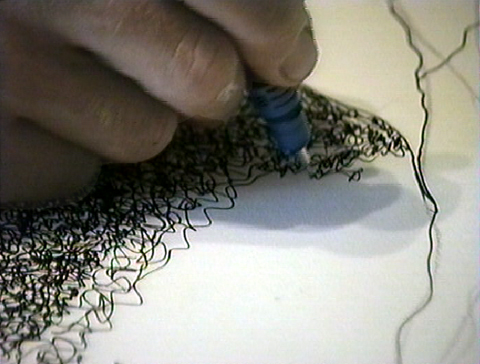 |
This
image illustrates the way the tone and texture is developed up in
the image as a series of overlapping pen marks. I found that black
pen was the best medium o use to match the blackness of the photograph.
For the first drawings competed around 1992-3, I used a Rotoring Pen
0.5 or 0.7 with black china ink. But the later drawings were completed
with a Pilot V 2000 0.5 pen. |
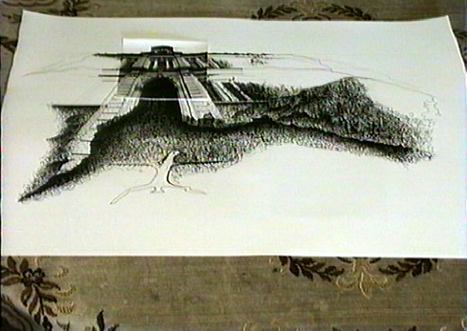 |
As
can be seen from this image some areas of the image evolve faster
than others leaving gaps on the paper which are later filled in. |
 |
The finished work - |
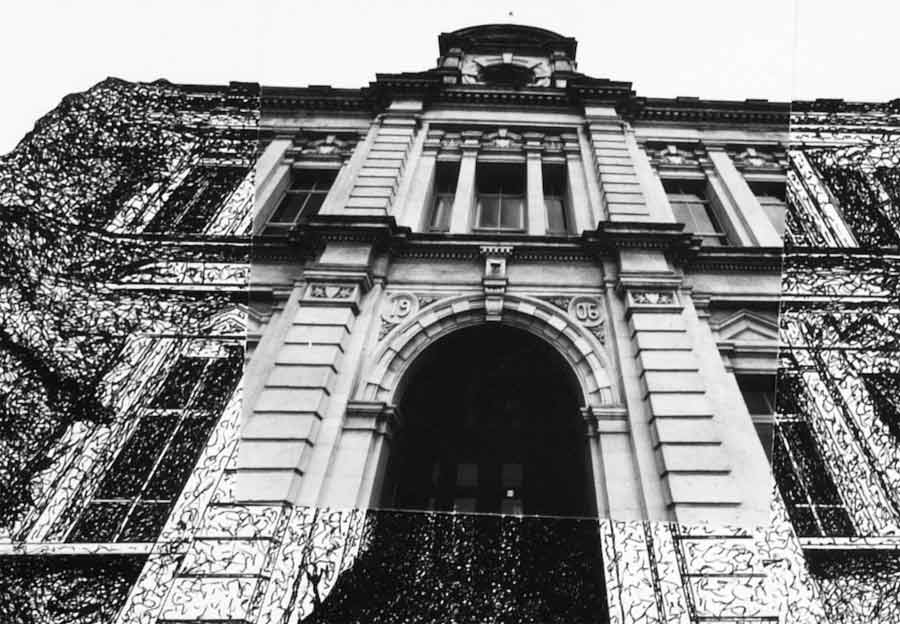 |
detail from finished work |
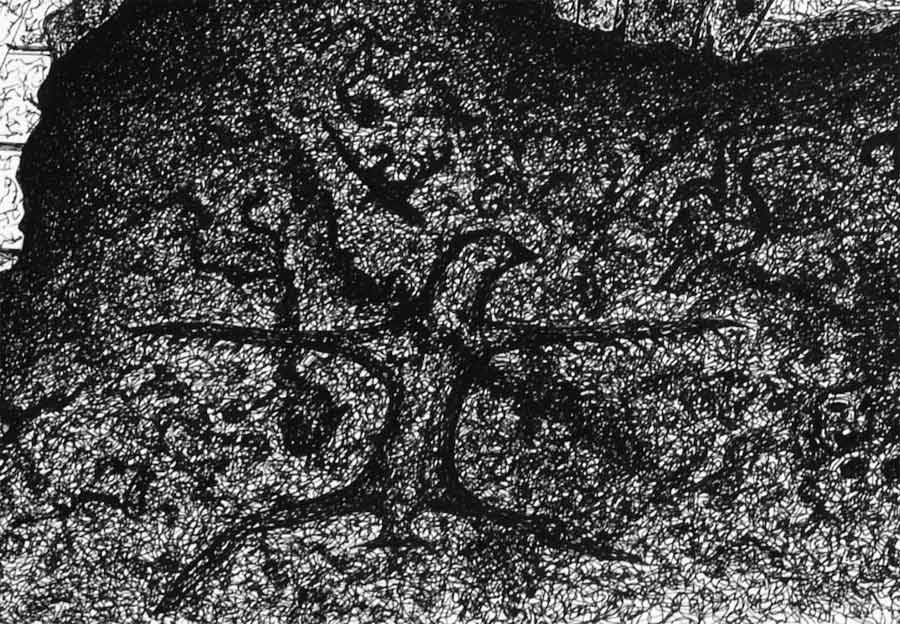 |
detail from finished work |
|